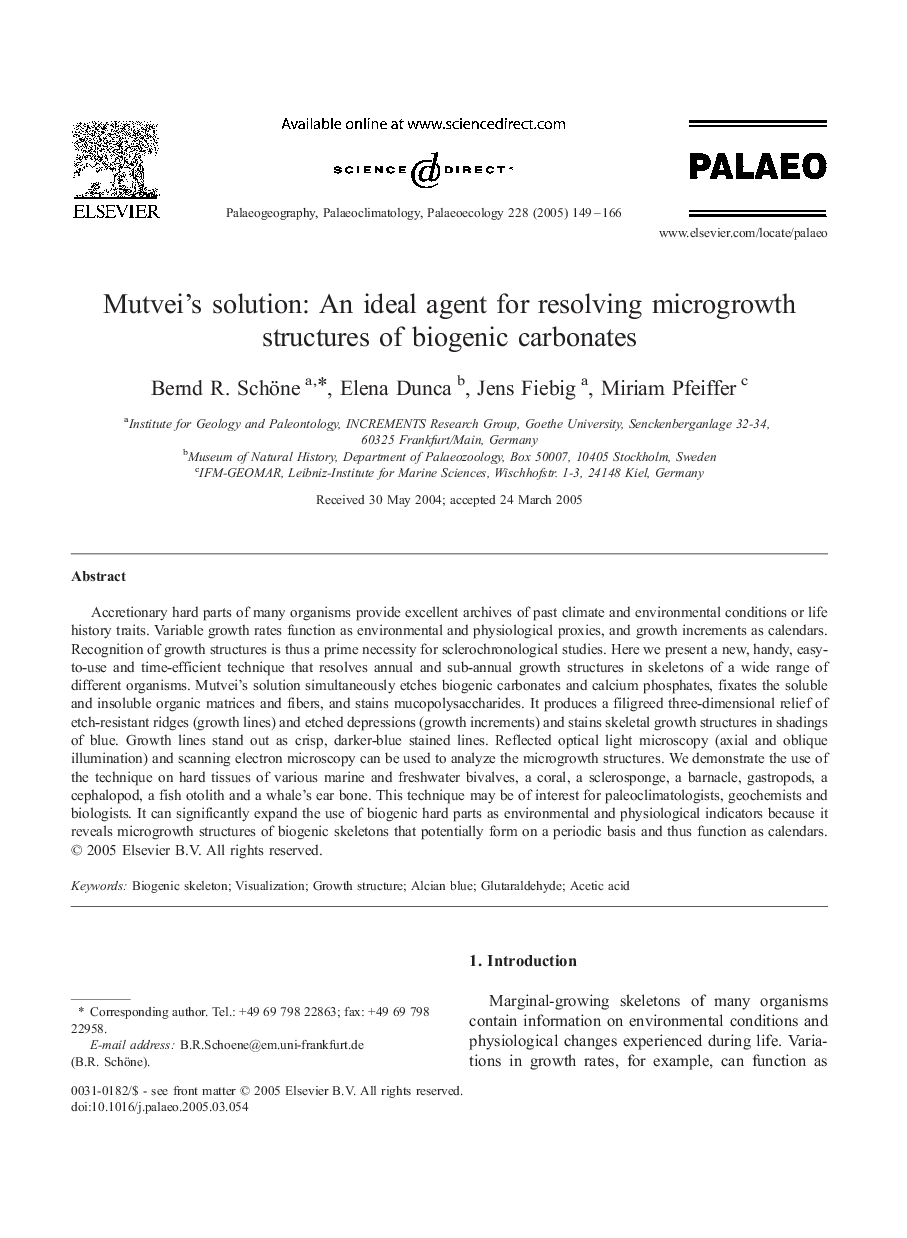| Article ID | Journal | Published Year | Pages | File Type |
|---|---|---|---|---|
| 9462969 | Palaeogeography, Palaeoclimatology, Palaeoecology | 2005 | 18 Pages |
Abstract
Accretionary hard parts of many organisms provide excellent archives of past climate and environmental conditions or life history traits. Variable growth rates function as environmental and physiological proxies, and growth increments as calendars. Recognition of growth structures is thus a prime necessity for sclerochronological studies. Here we present a new, handy, easy-to-use and time-efficient technique that resolves annual and sub-annual growth structures in skeletons of a wide range of different organisms. Mutvei's solution simultaneously etches biogenic carbonates and calcium phosphates, fixates the soluble and insoluble organic matrices and fibers, and stains mucopolysaccharides. It produces a filigreed three-dimensional relief of etch-resistant ridges (growth lines) and etched depressions (growth increments) and stains skeletal growth structures in shadings of blue. Growth lines stand out as crisp, darker-blue stained lines. Reflected optical light microscopy (axial and oblique illumination) and scanning electron microscopy can be used to analyze the microgrowth structures. We demonstrate the use of the technique on hard tissues of various marine and freshwater bivalves, a coral, a sclerosponge, a barnacle, gastropods, a cephalopod, a fish otolith and a whale's ear bone. This technique may be of interest for paleoclimatologists, geochemists and biologists. It can significantly expand the use of biogenic hard parts as environmental and physiological indicators because it reveals microgrowth structures of biogenic skeletons that potentially form on a periodic basis and thus function as calendars.
Related Topics
Physical Sciences and Engineering
Earth and Planetary Sciences
Earth-Surface Processes
Authors
Bernd R. Schöne, Elena Dunca, Jens Fiebig, Miriam Pfeiffer,
